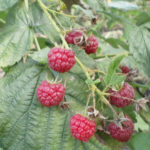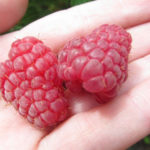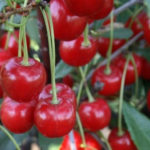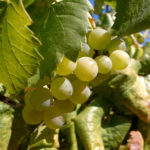Plum variety Hungarian Korneevskaya
A person who is far from gardening is likely to be surprised to learn that the popular Hungarian plum is not a variety at all, but a large group, which includes varieties of excellent taste, the fruits of which have a similar shape and color. Among the common varieties representing this group is Vengerka Korneevskaya. It got its name in honor of its creator - R.V. Korneev, who shared the authorship with L.N. Zhukova. Volgograd and Bogatyrskaya... The application for registration of the "novelty" was filed in 1991. The plum was entered into the State Register of Breeding Achievements of the Russian Federation only in 2002, after passing a long variety trial. The admission region is the Central Black Earth Region (Belgorod, Tambov, Kursk, Oryol, Lipetsk, Voronezh regions). The described variety is suitable for intensive gardens.
Description
The tree is of medium vigor, which, however, depends on the rootstock. The crown of the Hungarian Korneevskaya is rounded, spreading, raised, moderately thickened. The stem and skeletal branches are covered with gray bark, which eventually begins to peel off. The main branches extend from the trunk at an acute angle, which does not add strength to the connection. The shoots are arched, the bark is bare, dark brown, covered with multiple lenticels. Conical buds are located at an angle of 45 ° to the shoot, they are medium in size, brown. The leaves of the variety are of normal size, obovate, with a rounded base, short-pointed, with a small-crested edge. The color of the leaf plate is dark green on top and light green on the bottom. The leaves are corrugated, rough, slightly pubescent, straight. At the base of the leaf blade there are 2 small brown glands. The petiole is small, slightly pubescent, highly pigmented. Stipules are absent. The flowers are small, grow singly or form 2 or 3-flowered inflorescences. The harvest of Hungarian Korneevskaya is formed on long annual shoots and on spurs.

The drupes in the variety are oval, one-dimensional. The size of plum fruits is above average, weight 30 - 35 grams, height - 42.8 mm, diameter - 32.2 mm. The top is pointed, the funnel is deep and narrow. The abdominal suture is small, hardly noticeable. The color is dark, violet-brown, with a continuous thick waxy coating. There are many subcutaneous points, but they are hardly noticeable. Peduncle of regular length and thickness, straight. The pulp is yellow, juicy, cartilaginous, tender. The taste is good, sweet, and is rated quite high - 4.5 points. The juice is colorless. The content of substances in 100 grams of pulp: dry matter 19.75% - 22.5%, sugars 14.07% - 15.0%, acids 0.93% - 1.3%, vitamin C 6.51 - 9.1 mg. The stone is elongated, saber-shaped, easily separates from the pulp. The size of the stone is average - about 7% of the fruit pulp.
Characteristics
- The fruiting period of the Hungarian Korneevskaya begins 3 to 4 years after planting with a one-year seedling;
- the plant blooms in early May, flowering lasts more than a week;
- in terms of ripening of the plum, it is medium late. The ripening time of the crop is influenced by weather conditions, so this period can last from the second decade of August to the first decade of September;
- fruiting is regular, without interruption;
- the yield indicator is average. 25-30 kg of fruits are removed from 6-10-year-old trees. The State Register of Breeding Achievements of the Russian Federation recorded an indicator of up to 116 c / ha;
- the lifespan of a tree depends on the stock. On felt cherry, the plants are short and short-lived - the service life is only 12 - 15 years. On plums and apricots - for 18 - 20 years;
- the variety is winter-hardy, wood is especially resistant to frost. In severe winters or periods with sharp temperature changes, partial freezing of fruit buds may be observed;
- drought resistance of plums is good, especially when apricot is used as a rootstock;
- Hungarian Korneevskaya's immunity is high. During the years of the spread of diseases of fruit crops, the variety can be affected up to 2 points. Pests inflict damage up to 3 points;
- the culture is self-fertile, does not need pollinators;
- transport performance is excellent, dense drupes perfectly tolerate long trips. Keeping quality is also good;
- fruits for dessert purposes. But they are used not only in natural form. An excellent thick jam and jam is made from fruits, the fruits are dried and frozen.
Planting and leaving
For planting, it is best to purchase one or two year old plum saplings. The term of the procedure is spring or autumn. The place for growing this variety should be sunny, well-heated and protected from drafts. The soil is preferable loose and nutritious; loams meet these requirements. Due to the lack of Vengerka Korneevskaya in the form of an acute angle of branching from the trunk, one must be wary of a potential rift, which may arise due to a bountiful harvest or strong wind. Eliminate this defect at a young age, during the formation of the crown. In the spring, the branches are given a horizontal position and fastened to stretch marks. During the fruiting period, which is abundant, it is imperative to put supports under the branches. Thinning pruning of the formed tree is carried out in the spring, sanitary - as needed. Watering is moderate, the soil should not sour. The culture is responsive to feeding - complex mineral fertilizers are applied annually, organic matter is applied once every 2 - 3 years. Be sure to carry out preventive treatment against diseases and pests, in spring and autumn they clean and whitewash the stem.
Hungarian Korneevskaya is an excellent variety for an orchard. She will not disappoint even a novice gardener. Undemanding to soil and care, lack of periodicity in fruiting, high winter hardiness of wood and resistance to dry periods - all this makes the variety very popular. No significant deficiencies were found in the plum.








